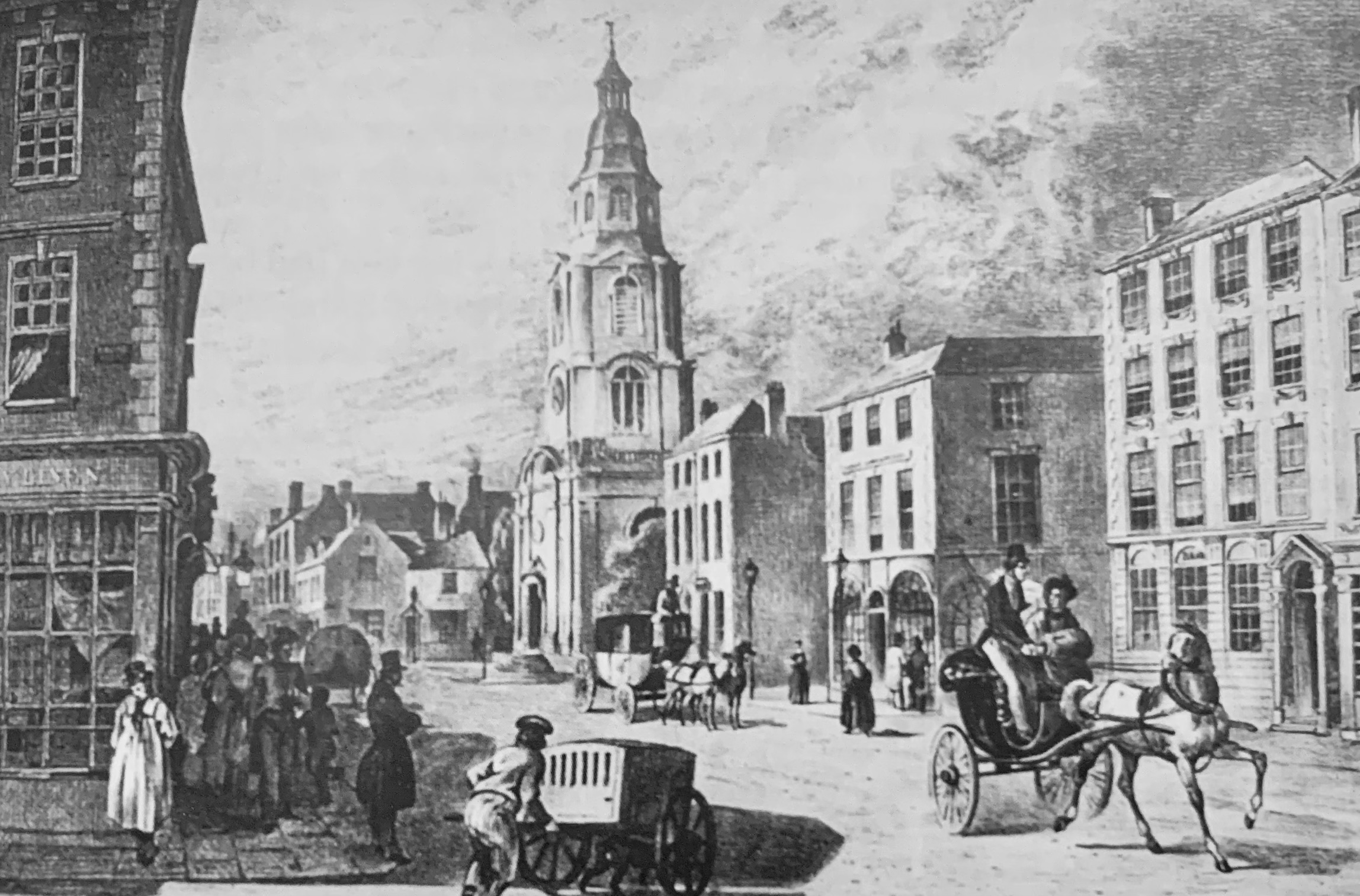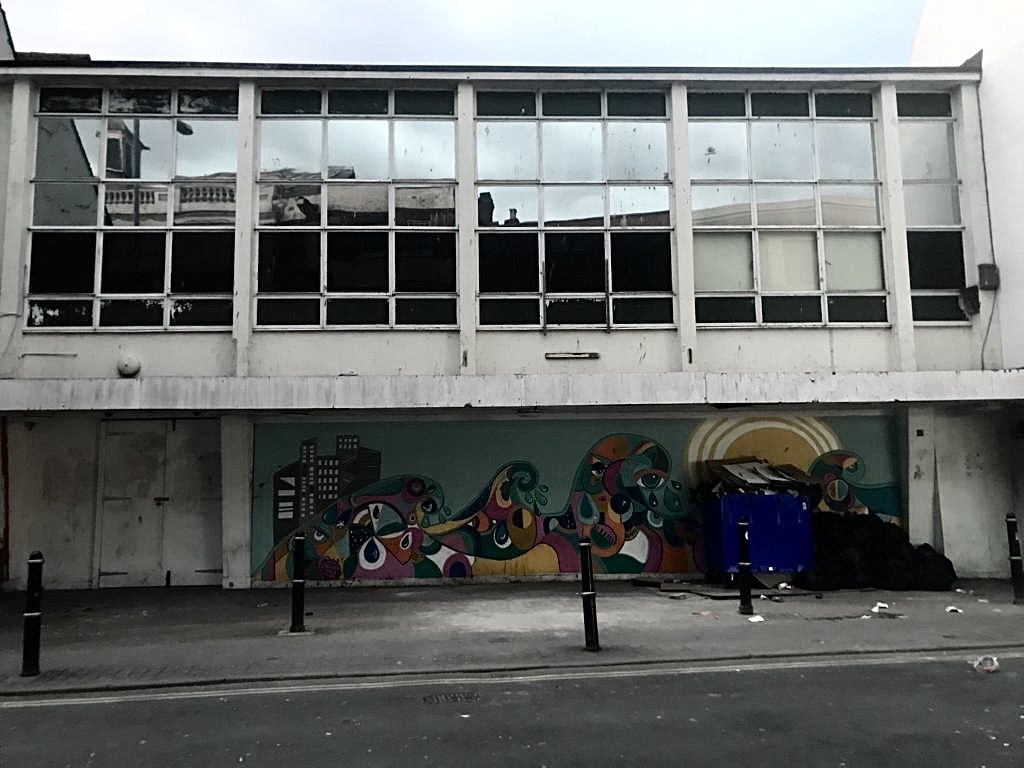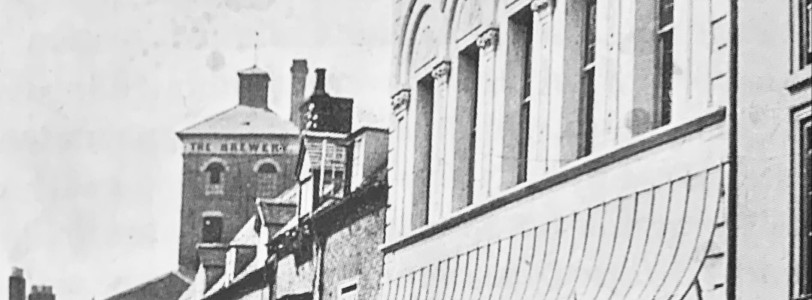This lecture about Worcester’s long-lost theatre - wonderfully presented by Suz Winspear - is a truly riveting recollection of its history and probable theories. The writer explored its fascinating origins and shows over two centuries from early circus performers, travelling actors and the local ‘Denville players.’As this was my first time listening to a lecture about theatre, I was especially inspired because I often overlook a show’s history when watching it. Foregate Street and The Cross 1820s (Worcester City Art Gallery)
Foregate Street and The Cross 1820s (Worcester City Art Gallery)
I enjoyed that the talk was humorous and interesting. The Worcester Theatre Royal stood in Angel Street since 1781 with next-door access to a Shakespearean Inn! There was satire of the early comedies and shows along with the rocky ownership as John Crisp’s precarious finances had almost caused the theatre to go bankrupt in 1821. The situation didn’t improve as a few years later, an avaricious manager Bennet, despite gaining a public reputation for ‘civic virtue,’ paid his actors unscrupulous wages. However, under his thirty-year reign, tragedies such as Hamlet and Macbeth were supplemented with witty plays As You Like It and School for Scandal.
In addition, I learnt that the theatre underwent several major architectural improvements and changes, the most significant example being in 1874. Following architect C.J Phipps plans to elevate its prestige, the façade was completely remodelled in the popular Italianate style – renaissance Victorian-era architecture. The interior stalls held an impressive 1,600 seats and outstanding acoustics! Unfortunately, as Winspear recalled, the new theatre was destroyed by a fire only three years later yet was rebuilt to its original design by Phipps. Ironically, it caught fire once more destroying the stage in 1912.
One of the memorable moments in the lecture was a story about an angry barber, getting many laughs from the audience. Next door to the theatre, they constantly pestered the construction workers with complaint about the dust and sound. In response, a doppelgänger dummy of himself was hung up on a pole in effigy form…which he desperately tried to shoot down with a blunderbuss. * A satirical illustration called him “the professor” aiming at his “second self.” Also, actors of their time such as William Trellis dominated Victorian melodrama, arguably the most influential genre of theatrical entertainment in the 19th century.
Interestingly, Variety shows and the Denville troupe of actors were all anyone could talk about in the thirties. However, following WWII it remained difficult attracting audiences and competitive cinemas were a threat. Therefore, the presenter’s epilogue emphasised the last performance in 1955 and its subsequent demolition. Today stands a derelict, graffitied eyesore stuck in the 60s.
 Angel Street 2023
Angel Street 2023
At the end of the lecture, I was lucky enough to get a signed copy of her book ‘Worcester’s lost theatre’ and have a look through authentic photographs of productions, newspaper clippings and original playbill posters. From reading several chapters, I am more appreciative of her excellent storytelling and documentation of the theatre’s history.
Overall, I found that, the writer’s oratory presentation was very engaging and lively, evident of decades’ worth of research on the topic of the city’s forgotten theatre. I have learnt to analyse older architecture: how their purposes have changed due to wider societal pressures or by personal ambition of individuals. An abandoned Co-op where once a modest theatre stood – who would’ve thought?
*Early version of modern shotgun






0 Comments